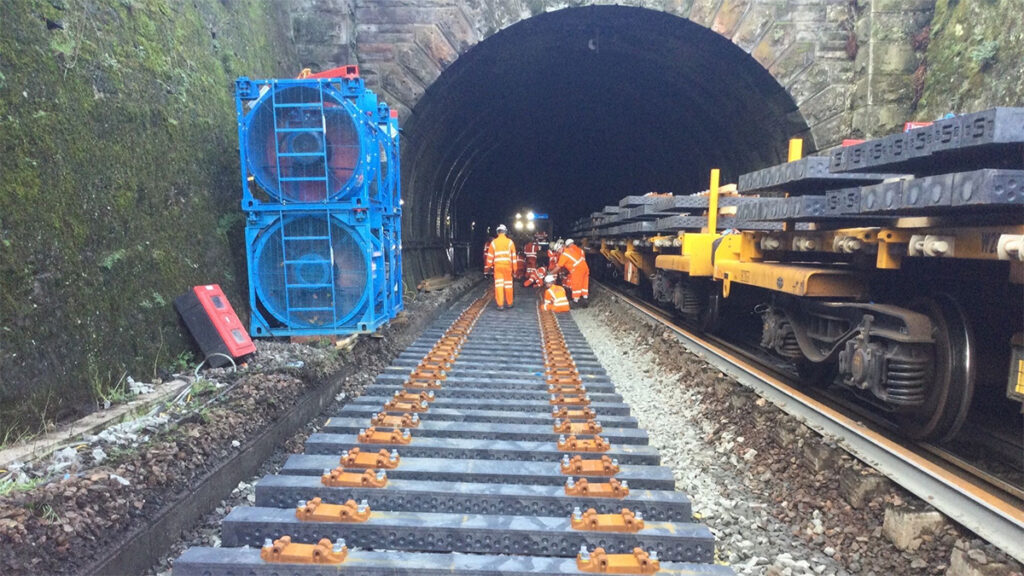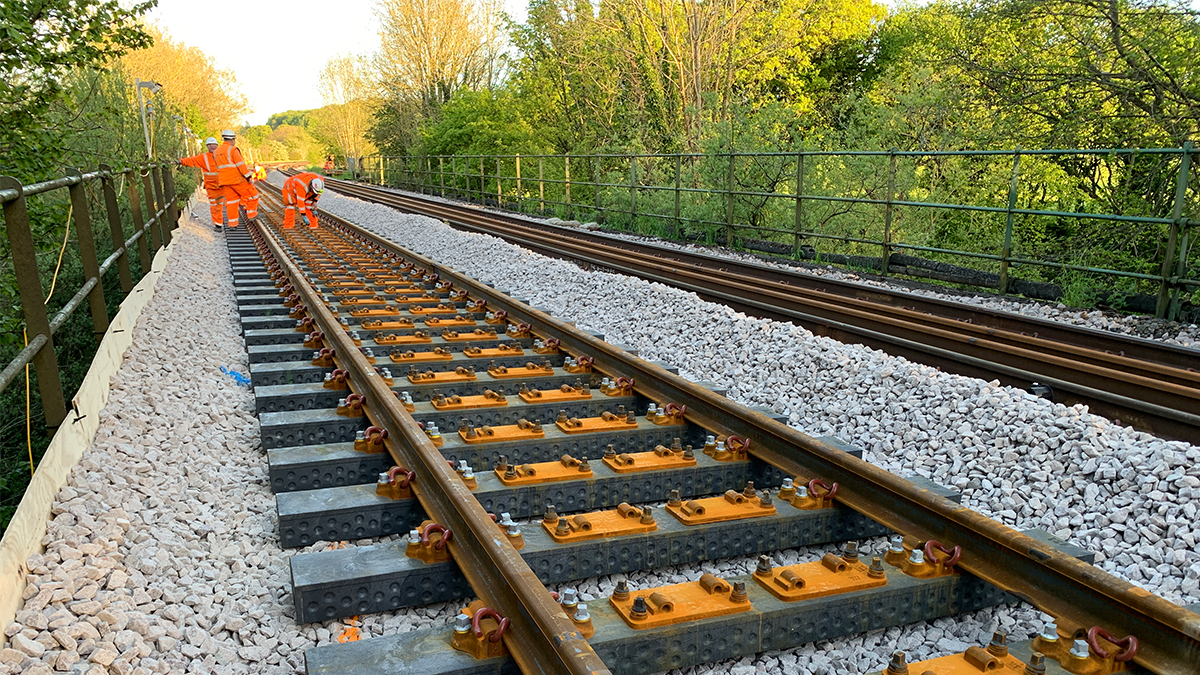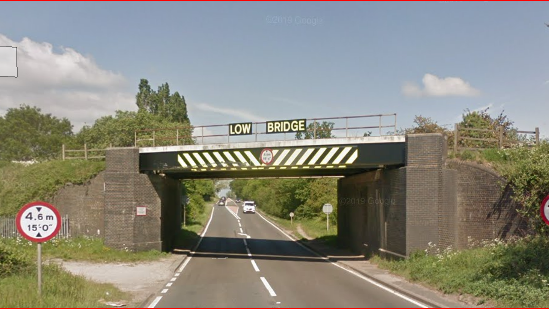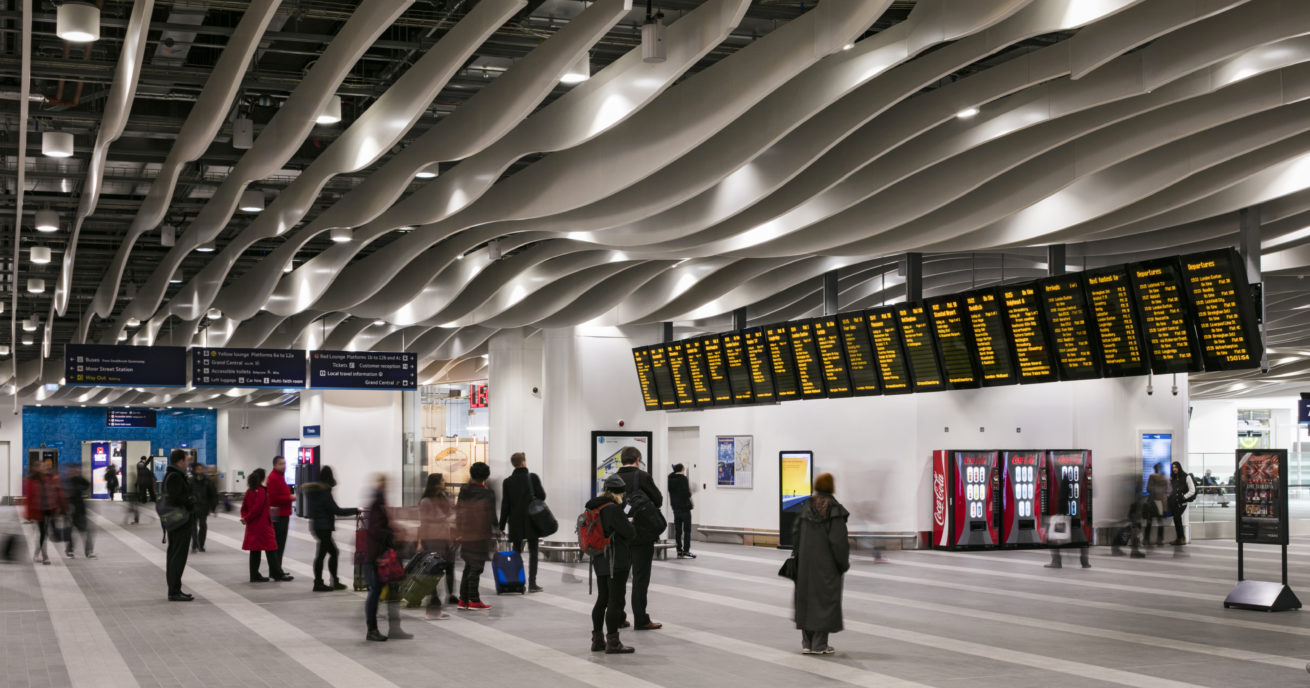We’re using more environmentally friendly sleepers to help reduce our carbon footprint and build a more sustainable railway for you.
Sleepers – an essential part of the track
Sleepers sit on the ballast – the stones on the track bed – and support the rail, ensuring the rail stays the correct distance apart. Replacing sleepers when they come to the end of their life is an essential part of our maintenance and renewal work all over the railway.
Moving on from softwood sleepers
Sleepers have traditionally been made of softwood. But creosote – a type of chemical – was typically used to treat the sleepers and preserve the wood to make it durable enough for the railway.
But there are concerns about creosote’s effects on human health and the environment. We decided to move away from using creosote-treated softwood and stopped buying these sleepers in July 2021.
Another option was hardwood sleepers but these come from countries such as Brazil. The tropical hardwood used to produce our hardwood sleepers can take up to 100 years to grow and the increasing demand for this material can lead to deforestation of tropical rainforests. We wanted to find a better alternative.
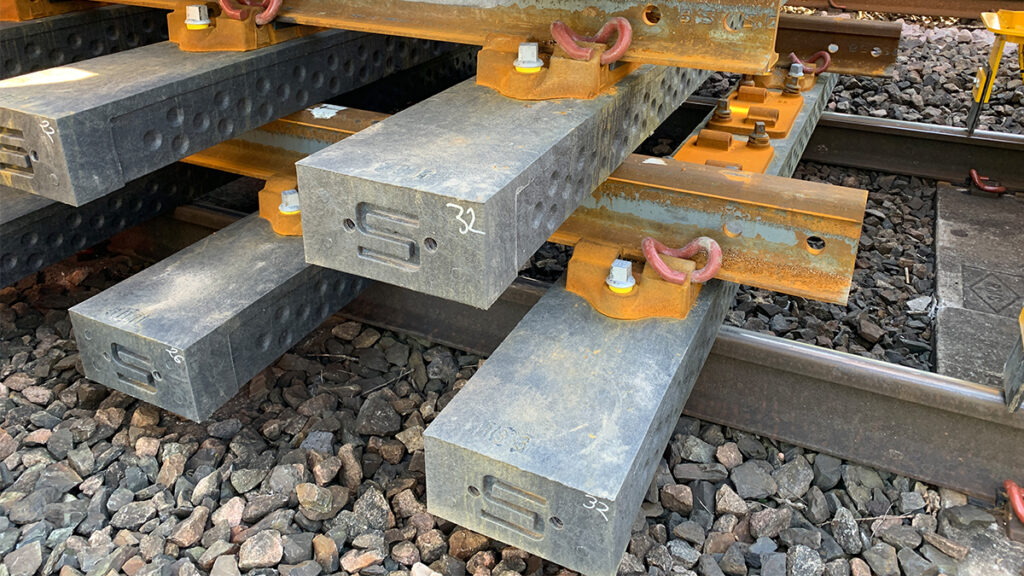
Composite sleepers – the sustainable option
Composite sleepers are made of recycled plastic materials like bottles, food packaging and other unwanted plastics that may otherwise end up in a landfill.
We started using them on our main line tracks in 2021, when we first installed them on the track across the Sherrington Viaduct in Wiltshire. More recently, we replaced more than 1km of track at Laggansarroch Viaduct, near Girvan in Scotland, with 200 composite sleepers.
They’ll help us achieve our net-zero emissions target by 2045 in Scotland and by 2050 in the rest of Britain.
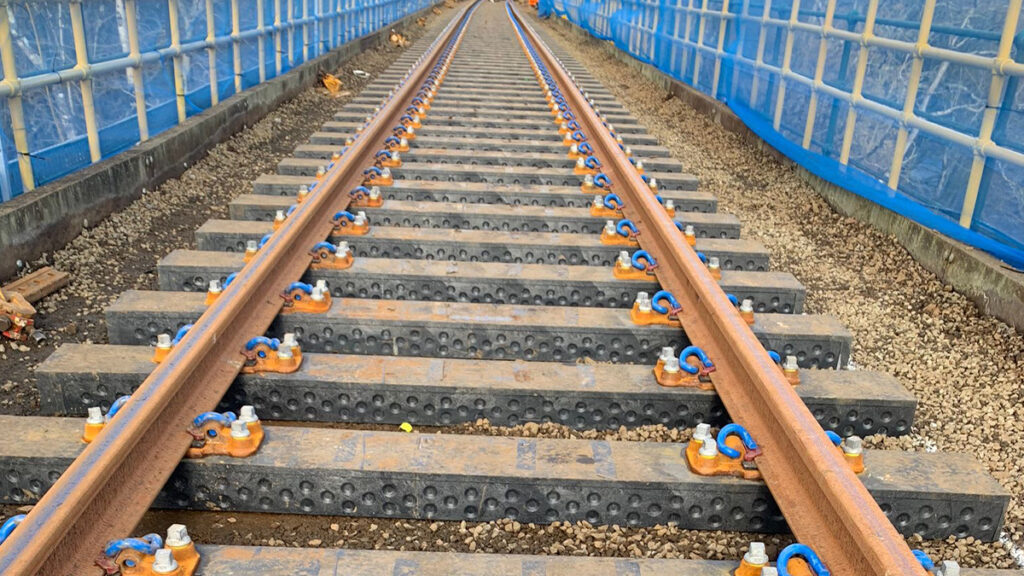
Helping us build a more efficient railway
Composite sleepers are more durable and require less maintenance than softwood sleepers. They don’t split, rot or degrade over time. And can resist water, oil, chemicals and fungi, unlike traditional sleepers.
The lifecycle of composite sleepers is at least three times longer than that of softwood ones. This is estimated to make a saving of nearly £3m a year (based on softwood sleeper purchases in 2021).
They’re designed for over 50 years of use and can even be re-used, re-purposed or recycled to make new sleepers or other products when they are eventually replaced.
Mark Killick, a director of engineering and asset management at Network Rail, said: “Rail is already one of the greenest ways to travel, but we’re committed to even greener and better journeys whether this be changing how we maintain the lineside or finding innovative ways to improve the railway by reusing materials and reducing landfill.
“By using these sleepers, not only are we upgrading the track for customers, they will be travelling on a railway laid using sustainable materials.”
